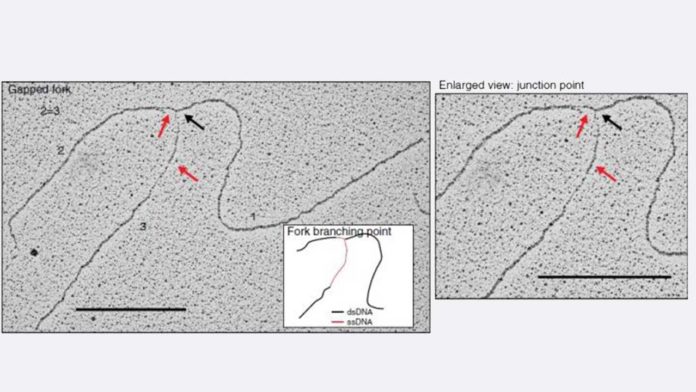Scientists at the Tokyo Metropolitan University have successfully depleted AND-1 for DNA replication. They are thus able to increase uncommon access to the mechanism behind how AND-1 functions amid DNA replication and cell proliferation in vertebrate cells, showing that AND-1 has two distinct capacities amid DNA replication intervened by various spaces of AND-1.
DNA is regularly alluded to as the “blueprint of life”; all together, to live living beings to function, it is indispensable that all cells share a similar diagram. This is made conceivable by the procedure of DNA replication, where the DNA is precisely replicated and conveyed before the cell increases.
Replication supports all biological legacy and is upheld by an entire scope of biochemical pathways intended to guarantee that it happens without mistake and at the correct speed. Inability to do as such may have disastrous results, including malignancy: understanding the particular instruments behind this exceptionally complex methodology is absolutely critical.
The AND-1/Ctf4 protein plays a vital role in DNA replication, but whether it is an essential gene for cell proliferation invertebrates has not been shown experimentally. Moreover, it still remains a mystery that how the loss of AND-1 affects cell proliferation.
TO find out the answer, scientists combined the use of two unique systems, the DT40 cell, a type of avian cell that is particularly suited to genetic engineering, and the auxin-inducible degron (AID) system, a means to realize selective depletion of a target protein.
The combination enables them to establish the and-1-aid cell line, in which a modified version of the AND-1 protein is degraded in a few hours after adding auxin, a type of plant hormone. They then analyze the acute consequence of AND-1 loss, giving unprecedented insight into the role it played.
At the point when done accurately, DNA replication should result in the arrangement of new double-stranded DNA helices. Creators utilized transmission electron microscopy (TEM) to picture DNA replication intermediates and watched recently orchestrated DNA having unusually long single-stranded DNA at the fork expanding point without AND-1.
They theorized this was because of a DNA separating chemical, a nuclease, disturbing the procedure of strands being dismantled. On assist expansion of an aggravate that smothers the activity of a specific nuclease, MRE11, they could effectively return the irregular replication fork phenotype and recuperate cell division, unequivocally exhibiting the key pretended by AND-1 in forestalling incipient DNA cleavage by the nuclease amid replication. Facilitate investigation uncovered that a particular piece of the protein called WD40 rehashes was in charge of keeping the amassing of harm to the strand.
Further to these discoveries, the examination features the successful combination of front-line methods to acknowledge the restrictive inactivation of particular proteins; the new cells were in reality created over a single month. This leaves the energizing prospect of the technique being connected to think about different qualities and procedures which are generally hard to target, prompting new experiences into how cells function.
The study has been published online in the journal Nature Communications.
